
Rediscovering Japan

Rediscovering Japan
Travel (Goto Islands (Nagasaki Prefecture) Part 1 (Nakadori Island)

by tomizuta
continue to Goto Islands Part 2
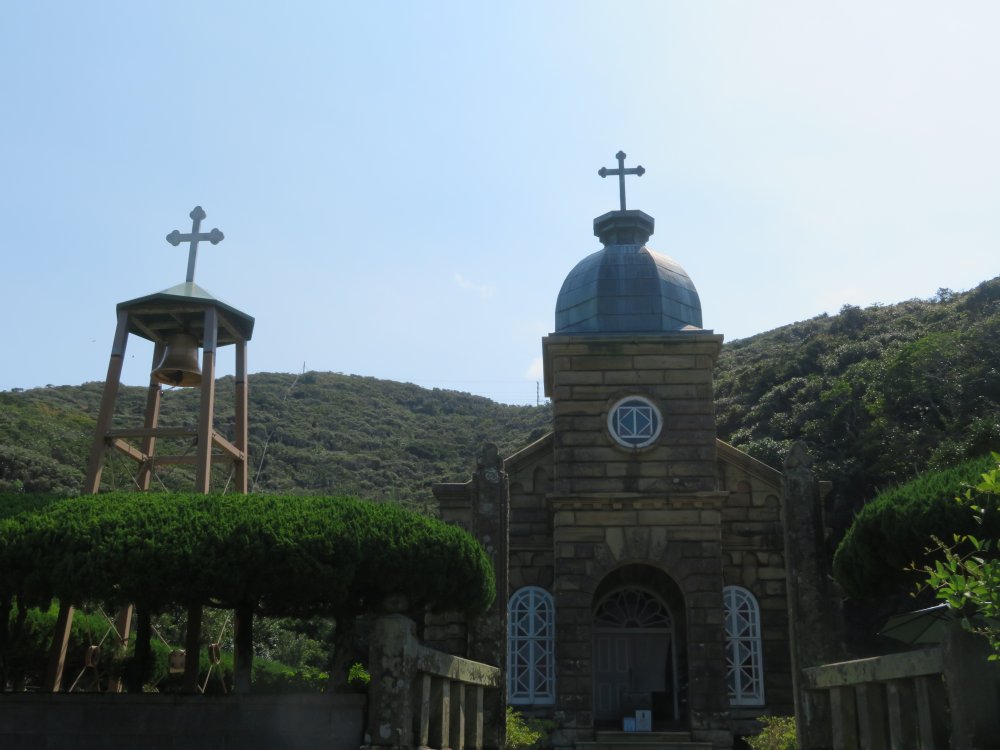
The Kashiragashima Catholic Church, a component of the World Heritage Hidden Christian Sites of Nagasaki. Hidden Christians from mainland Nagasaki migrated to this island in the late 18th century. The island was used as a place to house persons infected by diseases, and therefore avoided by other communities.
The Goto Islands, or Gotoretto as they are known in Japan, are a collection of islands belonging to Nagasaki Prefecture, situated in the western part of the prefecture. With a population of approximately 70,000, the islands stretch from the northeast to the southwest over a distance of 80 kilometers, or 150 kilometers if including the Danjo Islands. The Goto Islands are rich in natural beauty with complex, diverse landscapes ranging from natural beaches and sea cliffs to volcanic scenery. Nearly the entire area is designated as Saikai National Park. Scattered across the islands are numerous Catholic churches, which were registered as World Heritage Sites in 2018 under the title "Hidden Christian Sites in the Nagasaki Region." The islands are known for their seafood and handmade udon noodles. From the northeast, the five main islands are Nakadori Island, Wakamatsu Island, Naru Island, Hisaka Island, and Fukue Island, surrounded by smaller islands. The archipelago is divided into two main parts: Shimogoto, the southwestern islands centered around the largest island, Fukue, and Kamigoto, the northeastern islands centered around the second largest, Nakadori. Since my visit to the Christian-related heritage sites on the mainland of Nagasaki Prefecture in 2019, I've always wanted to visit the Goto Islands. My dream finally came true at the end of September 2024, when I joined a three-day, two-night guided tour. Considering the logistical challenges of island-hopping, I opted for this tour over a DIY trip involving flights and rental cars.
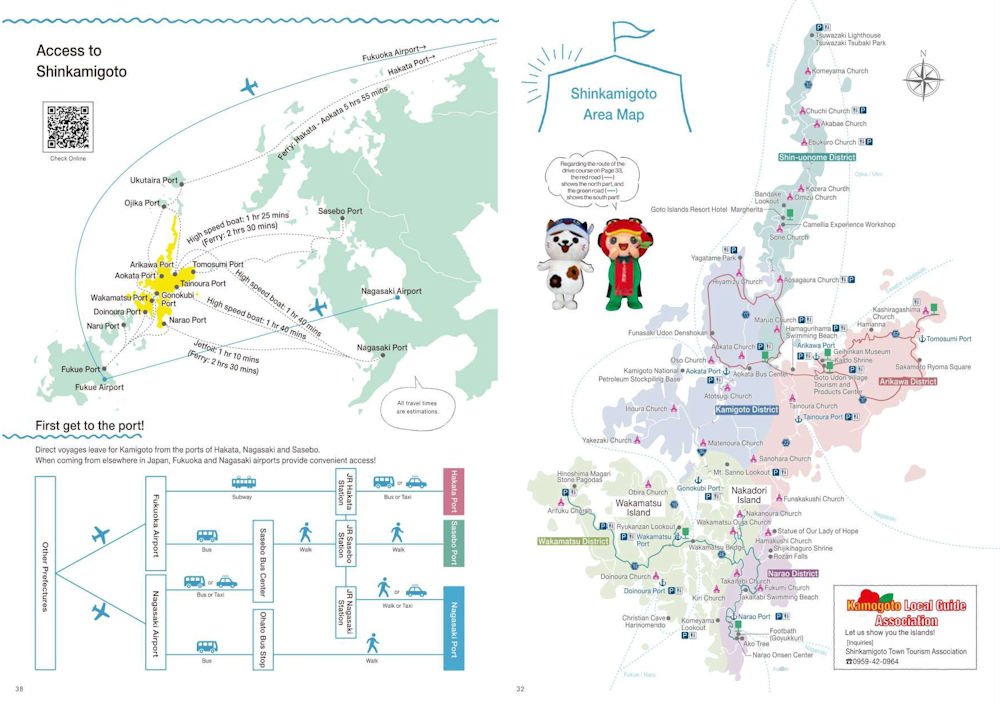
Here are two maps to help understand the route I traveled. The Goto Islands and access to the islands from mainland Kyushu (left) We traveled from Nagasaki Port to Narao Port to arrive on Nakadori Island marked in yellow. Map of Nakadori Island (right). These maps are extracts from the Kamigoto Guide Book issued by Kamigoto Town Tourism and Commerce Division I found at Nagasaki Port and available from their website. Click here for a larger picture.
After arriving at Nagasaki Airport from Haneda, our tour group was greeted
by a bus, which took us to Nagasaki Port in about an hour. Nagasaki Port,
located opposite the famous Dejima, was the only port open to foreign trade
during Japan's isolation period. We had lunch at the terminal and were
supposed to head to Narao Port on Nakadori Island, the second largest island
of the Goto Islands, on a jetfoil departing at 14:50. However, the ferry
announced that due to rough seas, they would be terminating the destination
at Fukue Port, cancelling the onward journey to Narao Port, despite the
clear weather at Nagasaki Port that day. We were left with no choice but
to wait two more hours to catch the next ferry leaving at 16:30. We were
sorely reminded of the need to be flexible with travel plans to the Goto
Islands, as the weather can often cause changes. The direct ferry ride
to Narao Port is an 80-kilometer journey that takes about one hour and
ten minutes. From Narao Port, it took us almost another hour by bus to
finally reach our hotel. It was a full day of travel.
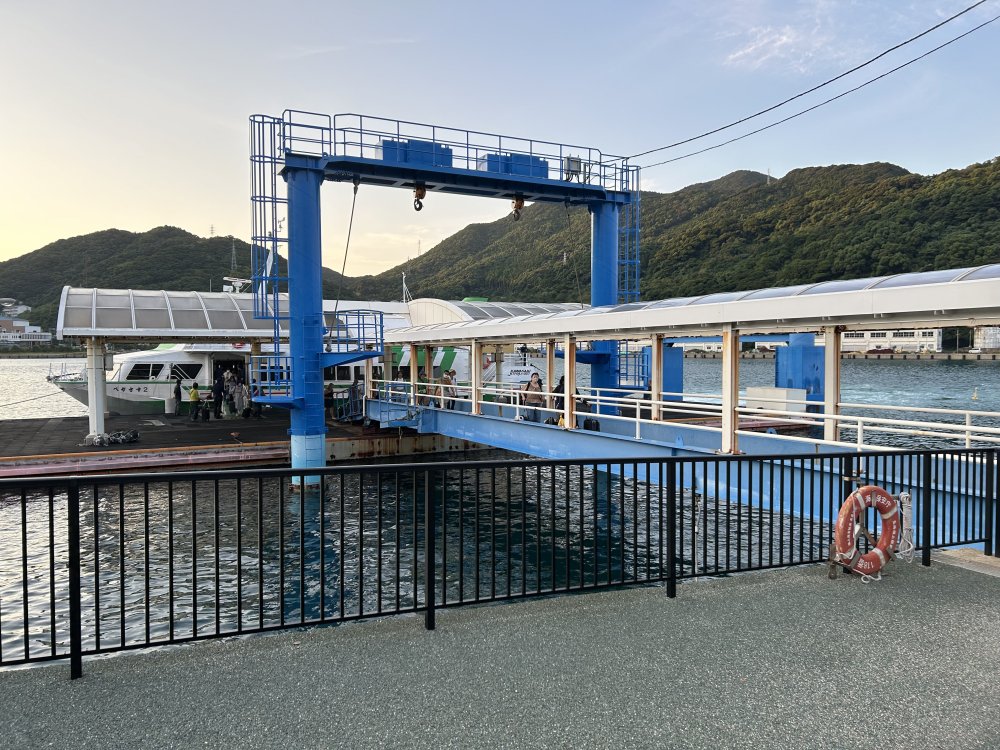
Passengers disembarking from the jetfoil upon arrival at Narao Port.
The Goto Islands are known for their history as a refuge for Hidden Christians. Christianity, introduced to Japan in the mid-16th century during the Azuchi-Momoyama period's open policies, spread across regions like Kyushu, and even the ruling Uku Clan of the Goto Islands once became Christian daimyos. However, with the ban on Christianity in the early Edo period, the history of Christians in the Goto Islands briefly came to a halt. The story resumed in the late 18th century when about 3,000 Hidden Christians from mainland Nagasaki migrated to the Goto Islands. Even after Western countries began returning to Japan in the late Edo period, persecution continued after 1865 when Father Petitjean met Hidden Christians in Nagasaki. Many Hidden Christians converted to Catholicism, and churches were built across the islands. About fifty churches remain today, most built after the late Meiji period. The following morning, we visited one such church, Sone Church, near our hotel. The first church was built in 1881, and the second church, constructed in 1899, was the first church project for architect Yosuke Tetsukawa, who I will touch upon later. Sadly, the second church was lost and the current church rebuilt in 1966. The Hidden Christians who migrated to the Goto Islands in the late 18th century were given difficult-to-cultivate land in the hills, leading to a harsh life. As a result, many churches are located in these mountain regions. The church buildings are more compact compared to those in the West.
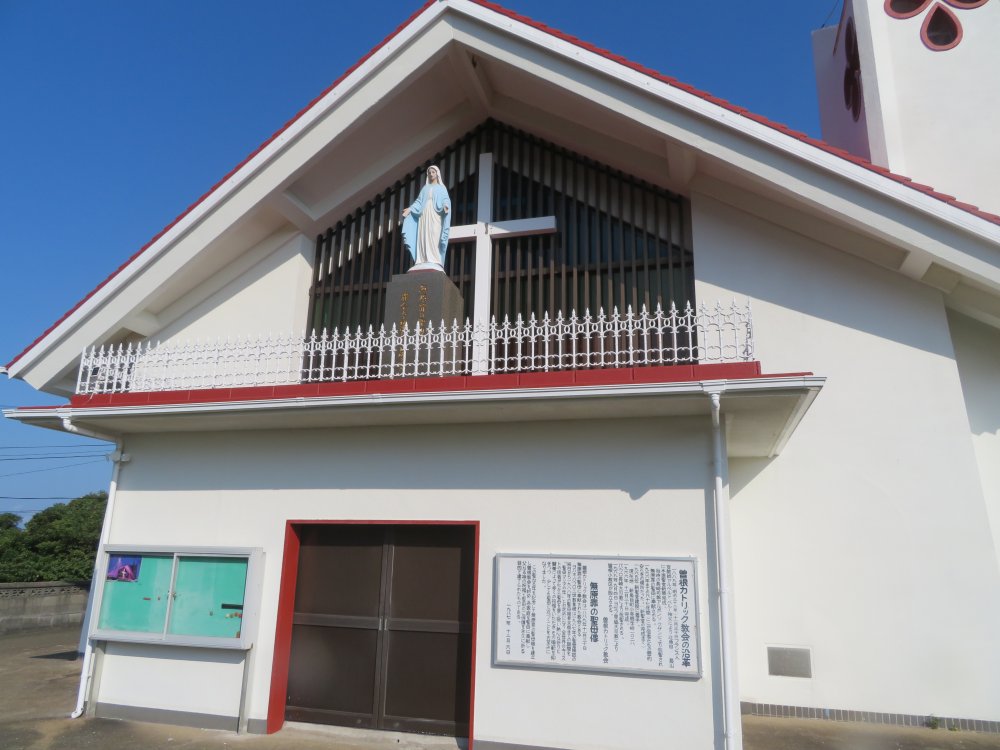
Sadly, the second church built in 1899 and constructed by Yosuke Tetsukawa has been lost. The present charming Sone Catholic Church building was rebuilt in 1966. It is an active church.
Our bus departed from the hotel and arrived first at Aosagaura Church, about 15 minutes to the south. The first church was built in 1878 by Christians who had migrated from Sotome (area north of Nagaski City with many Hidden Christians) on the mainland and returned to Catholicism from their Hidden Christian faith. The current building, completed in 1910, is the third church on the site and is made of brick, designed and constructed by Yosuke Tetsukawa (1879-1976). Tetsukawa, a carpenter from a nearby village and a lifelong Buddhist, was involved in the construction of many Catholic churches in the Goto Islands. Although the church is designated as an Important Cultural Property of Japan, it is not included in the World Heritage Sites. This is because the building is considered too modern and the Christians had already returned to Catholicism, diverging from the Hidden Christian theme of the World Heritage designation.
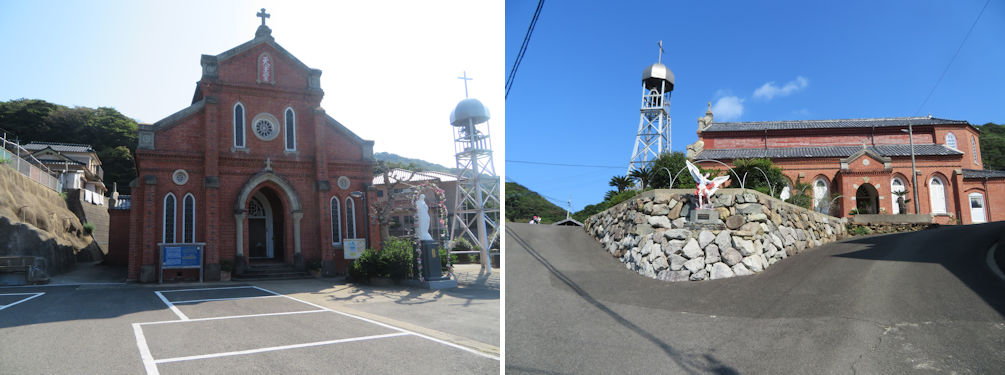
Aosagaura Catholic Church as viewed from the west (left) and south (right).
We next visited Yagatame-no-eki, a facility that serves as both a salt workshop and a local products center. Japan lacks rock salt, so salt has traditionally been produced from seawater. Under the salt monopoly system introduced in the early 20th century, traditional beach-based salt production methods were abolished from 1971 in favor of modern factory production using seawater as the raw material. However, with the liberalization of salt production and sales in this century, premium natural salt produced using traditional methods has started to be made again in various places. The salt from the Goto Islands is one such product and is now a specialty of the region. The salt workshop here uses a traditional method of boiling down seawater using firewood.
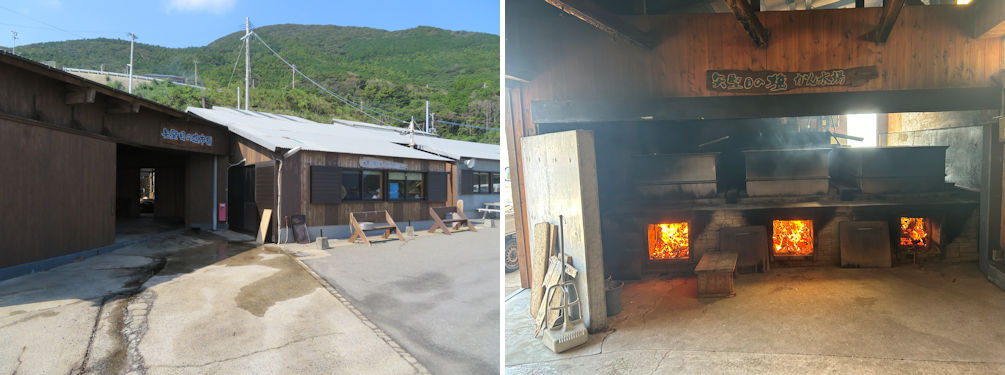
View of Yagatame-no-eki, serving as a salt workshop and local products shop (left). The main local product is sea salt and Goto udon that I touch upon later. Seawater is put into the cauldrons and boiled by burning firewood to increase the salt concentration (right).
The shape of Nakadori Island resembles a cross. Following Yagatame-no-eki, we were taken to a restaurant in Arikawa Town, located at the intersection of the island cross. One of the specialties of the Goto Islands is Goto Udon, which is somewhat thin and characterized by the addition of camellia oil to the dough. The history of udon-making in the Goto Islands is old, with some theories suggesting that it was introduced from China before the 9th century due to the islands being a frequent stop for envoys sent to Tang China (kentōshi) by the Yamato Court from the 7th to 9th centuries. The highlight of our lunch was a local dish called jigoku-daki, which involves boiling Goto Udon and dipping the noodles in a flying fish stock-based dipping sauce (tsuyu).

The highlight of our lunch was a local dish called jigoku-daki, which involves boiling Goto Udon and dipping the noodles in a flying fish stock-based dipping sauce (tsuyu).
After lunch, we headed to Kashiragashima Church, located on the eastern
tip of Nakadori Island. In the 19th century, Christians fleeing persecution
on the mainland took refuge on the island of Kashiragashima. I mentioned
before that most churches are located in the hills. This church is an exception
as it sits close to the seafront. The reason was that the island was used
as a place for persons infected with diseases, and therefore avoided by
other communities. These Hidden Christians, who converted back to Catholicism,
built the first church in 1887. The current stone church, completed in
1919 after ten years of effort, is the only stone church in Western Japan
and a rare find in the entire country. Though the church is relatively
new, it is included in the World Heritage component properties as part
of the Hidden Christian village of Kashiragashima.
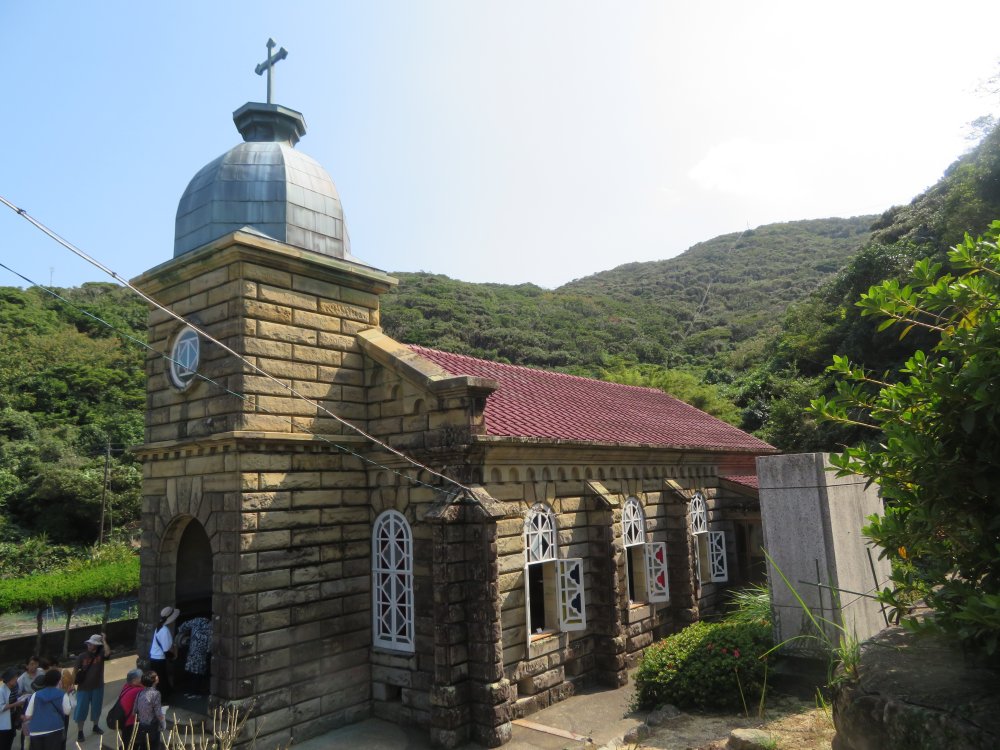
The Kashiragashima Church. Viewing is by appointment only. It is an active church.
The Goto Islands have been inhabited since the Paleolithic era, with multiple Jomon-era archaeological sites. One such site, the Shirahama Ruins, is located near Kashiragashima Church and has yielded human remains.
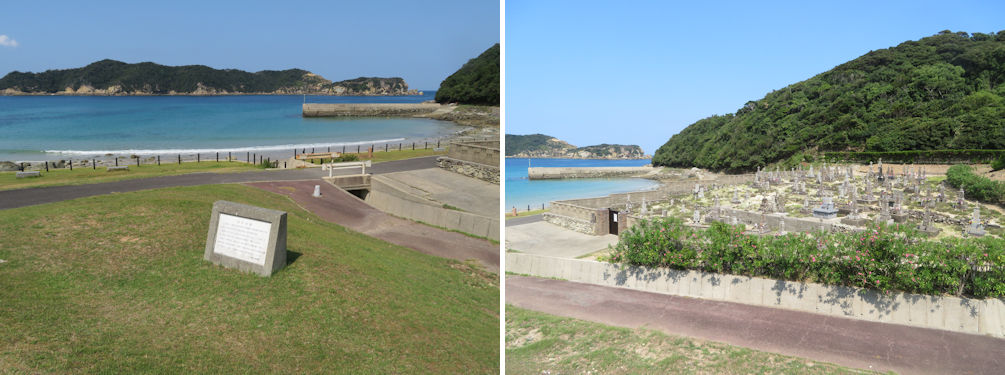 /p>
/p>
The Jomon-era archaeological site (left)and the Christian graveyard (right) of Kashiragashima Church is located next to each other.
Our tour itinerary included a ferry ride from Narao Port to Fukue Port
on Fukue Island in the evening of the second day. Before boarding the ferry,
we visited Narao Shrine, our last stop on Nakadori Island. Many shrines
have ancient origins, but Narao Shrine is relatively recent, dating back
to the Keicho era (1596-1615) when fishermen from Hiroura in Kishu (present-day
Hirogawa Town, Wakayama Prefecture) moved here to establish a base for
skipjack tuna fishing and enshrined a part of the deity from the Seven
Shrines of Kishu. The shrine's most notable feature is a giant banyan tree
designated as a national natural monument, standing astride the approach
path. After about 20 minutes of exploration, we boarded the ferry for an
hour-long journey.